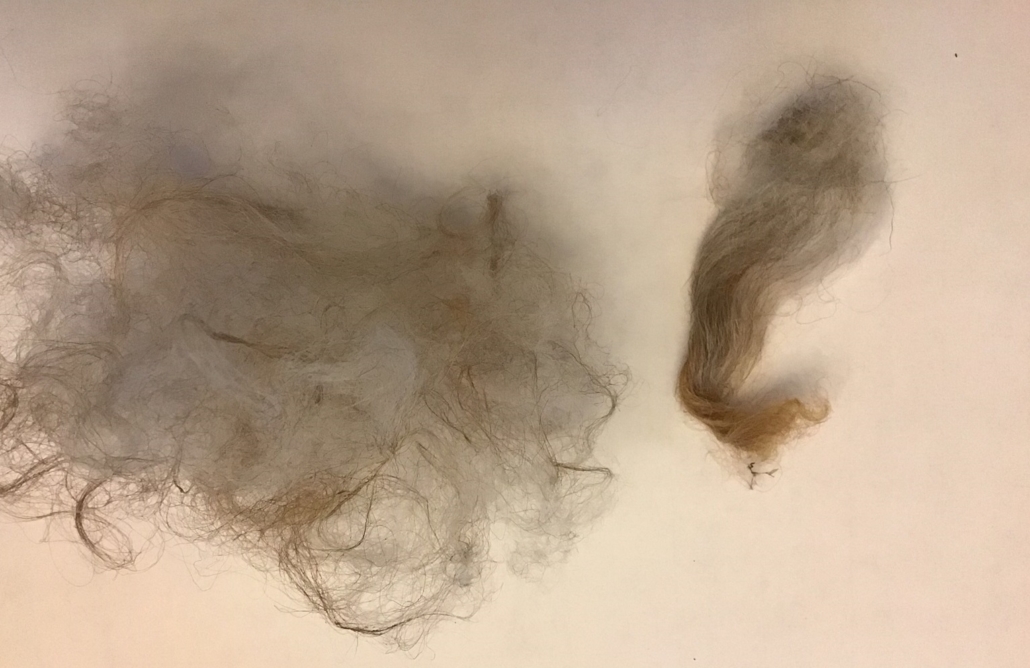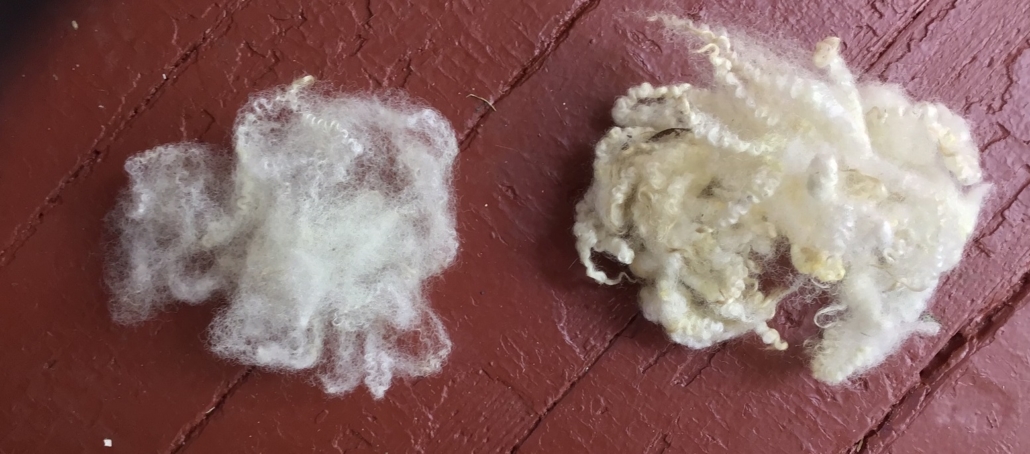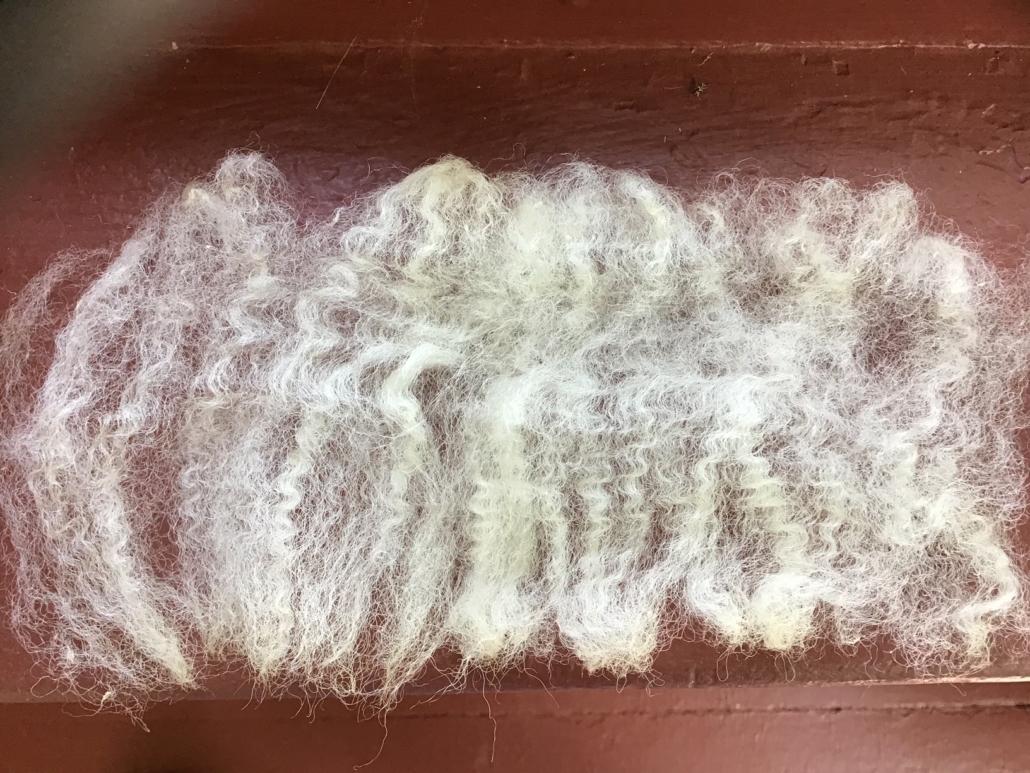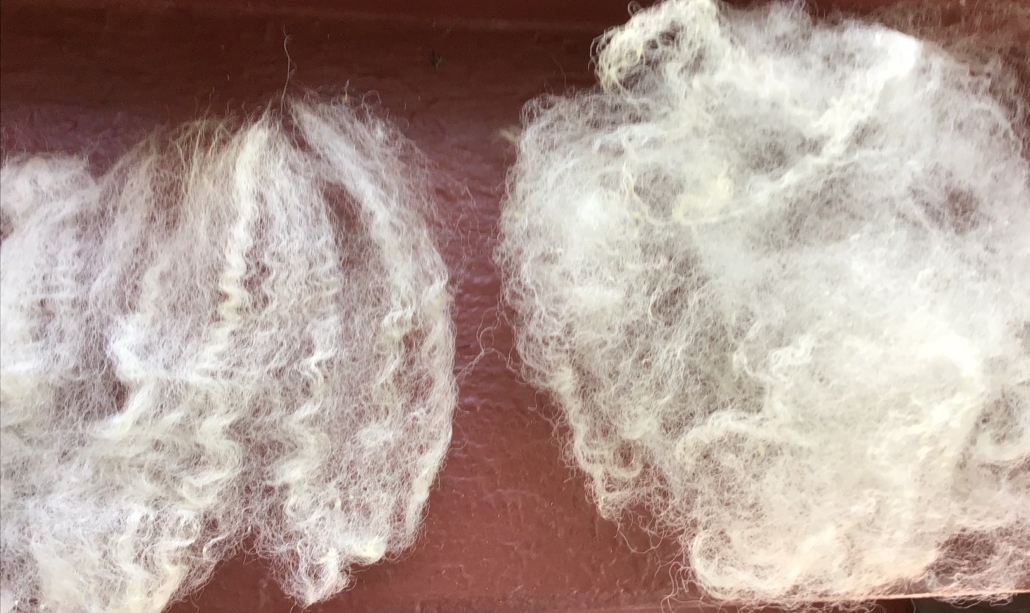Low-tech wool (and other fibres) prep
Words and Photos by Joanne Seiff
When was the last time you took a lock of raw or washed wool, teased it out into a cloud, and immediately spun it up? When I was taught to spin, back in the dark ages – the mid-1980s – we called this teasing the wool. This low-tech approach was part of how we explored spinning. In retrospect, perhaps this was called teasing as a product of its time. Beehives and teased hairstyles were old-fashioned then but not ancient history. People knew how to tease hair, too.
I was taught this as a kid, volunteering in a living history context. Offered a pile of dirty or minimally washed wool, I sat at the feet of an adult who was spinning. One or two of us teased each lock of wool into a cloud, allowing much of the vegetable matter to fall out onto the ground. An older kid might then take the teased wool and card it, making it into tidy rolags for the spinner. We were all busy, feeding the orifice and producing a higher quality, cleaner yarn.
I still explore basic fiber prep with my hands whenever possible. Whether you choose to spin raw or washed wool, worsted or woolen style, there are ways to prepare your wool without the use of any tools, just your hands. This allows a chance to really experiment and learn about a particular breed and fleece choice up close, giving a chance to sample and study what will work best. It also connects us to the many generations of spinners who lacked fancy tools. In the end, you might choose cards or combs to complete your processing – but you’ll know why you did it!
Part of the allure of teasing your wool out, one lock at a time, is that you can ensure an entirely woollen preparation, with locks in every direction like a cloud. If you hold it up to the light, you can see the jumble clearly.


Or you can do a semi-worsted approach, by gently spreading and teasing out the lock but keeping the fibers neatly aligned in parallel to the wheel or spindle.


Teasing a fleece dyed in the lock can allow for color experimentation and close-up examination before undertaking a faster prep method, such as with a drum carder.
Sometimes you’ll find your fiber really doesn’t need anything more than teasing to make it ready for spinning. If you’re seeking a textured single or an art yarn, teasing may provide you with the process you need. A bonus is that if you set yourself up with unprocessed fiber and a basket for the teased fiber beside it, you may be able to get yourself through a marathon TV or audiobook binge – complete with something mindless to do with your hands!
On a more philosophical level, starting with raw fleece and a spindle – and no other tools – allows you to examine how things can be done entirely by hand. We are products of our time. Many of us love all the available gadgets that come with spinning. There are odes online to flick carders, hackles, blending boards, cards, combs, drum carders, and commercial processing. Although sometimes expensive, these tools are available to many spinners. We can try every kind of technique. However, people have been spinning all over the world for thousands of years, often with very little equipment. Did it keep them from spinning?
Absolutely not.
The next time you take a hike, look at the hedgerows. Do you see a wisp of wool caught on a bush? Do you collect downy fibers from plants, wondering if they can be spun? There’s also something magical about helping out at a sheep shearing, returning home with a fleece, digging into the bag on the porch, teasing a lock at a time, and spinning the yarn up before it ever comes indoors.
Teasing allows you a nearly instant way to find out the potential – a chance to immediately imagine what your newest acquisition might be. Separate out a lock of wool, a bag of alpaca seconds, a cloud of cashmere, or a cotton boll. Find out what you can do – solely with your hands. Practice getting in touch with fibers with your fingers. You may be surprised at what you learn.

Joanne Seiff has written 3 fiber-related books: Three Ply,Fiber Gathering, and Knit Green. She writes, edits, spins, knits, designs, and teaches in Winnipeg, Manitoba. See Joanne Seiff’s designs on Ravelry and on Lovecrafts.com – her designs might sing in your handspun. Read Yarnspinner, her blog, at joanneseiff.blogspot.com, to learn more!





Leave a Reply
Want to join the discussion?Feel free to contribute!